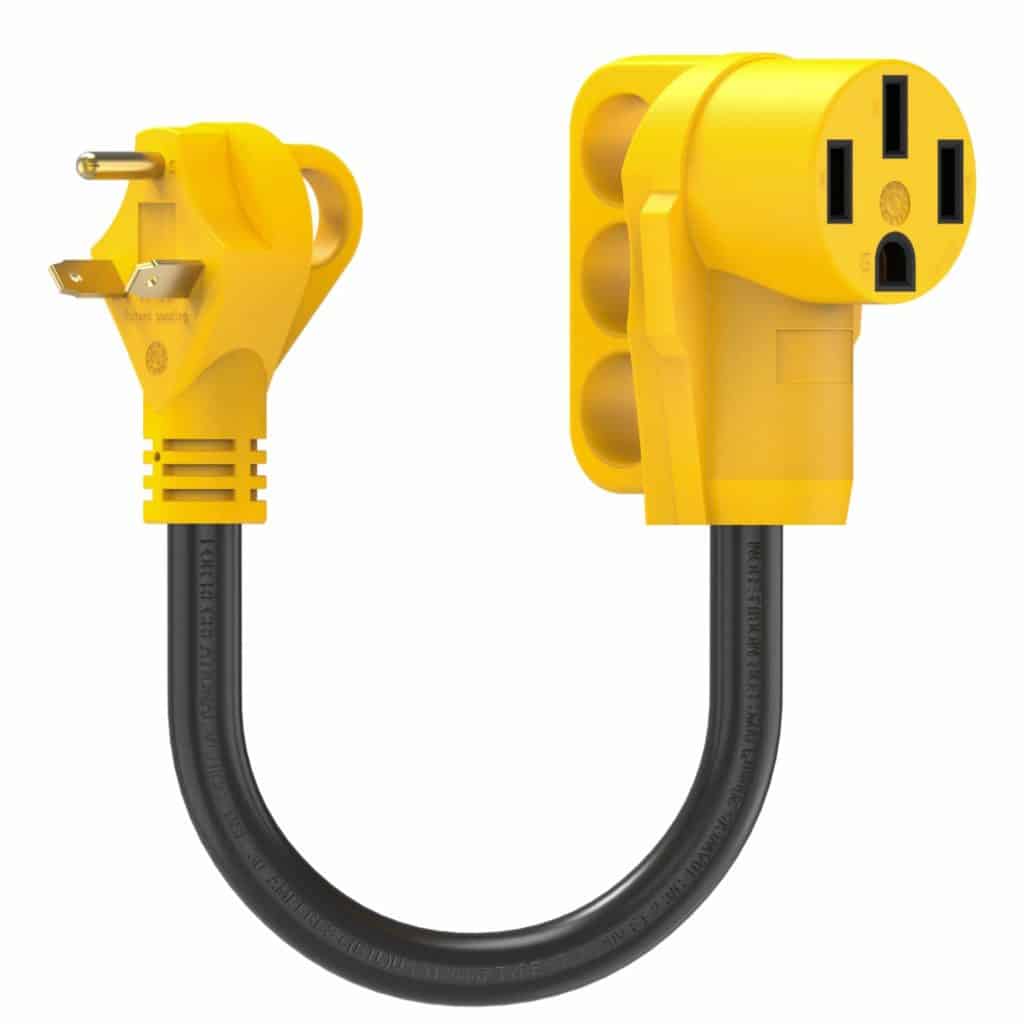Your RV’s electrical system enables you to use a lot of the contemporary amenities to which you have become used, like your HVAC system, refrigerator, and vent fans.
And as fantastic as it is to have access to all that gear when traveling, it helps to have a fundamental grasp of how your RV’s electrical systems operate if you want it to continue operating flawlessly.
A basic awareness of RV wiring and power sources may help you make educated choices about where to draw electricity from if you expect to use your RV often (and particularly if you’re planning to live in one full-time).
It can also assist you troubleshoot if anything does go wrong.
Since most RVers are not electrical engineers, we won’t go too technical (this isn’t RV wiring for dummies! ); for example, you won’t learn how to rewire your whole RV.
To enable you to comprehend what is happening with all of your batteries, panels, wires, and cables, we will provide you with a foundational understanding of RV wiring and a vocabulary list.
The NRVTA program is ideal for you if you want to learn more about RV electrical systems and how to maintain and fix RV problems on your own.
To get 5% off all courses, go here and use the promo code RVSHARE.
There are two ways to take the RV Owners home study course.
Internet & USB
- A copy of the online version is also included. This is ideal for RVers who like to retain a paper copy or may not have access to reliable internet.
- RV owners who have reliable internet, don’t mind waiting for UPS, or want to keep everything digital will benefit from it.
How Does the Power System in an RV Operate?
There is never going to be an endless supply of electrical power available to you, whether you’re in a house or an RV.
As a result, it makes sense to relearn a formula you probably long since forgot yet studied in high school.
Current, or amps, and voltage combine to form watts, or total power.
Watts = Amps x Volts, sometimes abbreviated as W = A x V, is the equation for this.
This formula will tell you how many different electrical gadgets you can have on simultaneously in your RV (or in your house, for that matter).
Your circuits will function properly as long as you don’t exceed the available watts.
If you try to operate your microwave and hair dryer at the same time, you may already be aware that doing so can trip the circuit in your RV’s electrical system.
Since your RV has both AC and DC electrical systems, we need quickly discuss their differences.
A direct current system (DC system) is one in which electricity only travels in one direction.
Contrarily, with AC power, the current alternates regularly in both directions, thus the name Alternating Current.
Two Electrical Systems And One Rv
A 12-volt DC electrical system and a 120-volt AC system are the two distinct electrical systems in your RV.
The start-up of your water heater, furnace, and refrigerator, as well as the majority of the lights in your RV’s living area, your water pump, your carbon monoxide detector, and a number of other things are all powered by the 12-volt system, which is powered by a battery (or, in some cases, multiple batteries).
Kitchen appliances, your TV, and other major electrical appliances are powered by the 120-volt system, which is supplied by an RV electrical connection connector or a generator.
RV Power Sources: Battery Information
You guessed it: 12 volts total are required for the 12-volt system in your RV.
A single 12-volt battery or numerous 12-volt batteries connected in parallel circuitry may be used to do this.
However, it is usually preferable to use two 6-volt batteries connected in series to generate a 12-volt battery rather than just one 12-volt battery.
You will often have a significantly deeper drain time or a battery life that is much longer with this arrangement.
Using two 6-volt batteries comes with a compromise: two batteries take up more room than one.
However, if your camping demands need that extra battery life, the trade-off can be worthwhile.
Your 12-volt battery (or batteries) begin to charge automatically when you are hooked into an RV pedestal at a campsite (or any other power source).
You can use your batteries to power anything that requires 12 volts if you’re boondocking or dry camping without being plugged in.
The 12-volt battery’s direct current may be changed to 120-volt alternating current by adding an inverter, allowing you to utilize your car’s outlets and power 120-volt appliances.
Knowing how much discharge time you have is important since the 12-volt system in your RV, like all batteries, ultimately loses power and has to be recharged.
50 Or 30 Amps?
A power cable to connect to the campground’s electrical pedestal is almost always included with RVs (developed campgrounds with available hookups, anyway).
This link is frequently referred to as “shore power.” There are two amperages available for these power cords: 50 and 30 amps.
A 50-amp cable contains four prongs, compared to a 30-amp cord’s three.
It goes without saying that a 50-amp connection allows you to utilize far more energy at once than a 30-amp hookup would.
* To determine how much extra power you have, keep in mind the electricity formula at the beginning of this piece.

While many campsites provide both 50-amp and 30-amp RV electrical connections, other parks only offer 30-amp hookups.
Remember that you won’t be able to consume as much power if you reduce your amperage down to 30, as opposed to if you were plugged in at 50.
To prevent a power loss, you should also utilize the smallest extension cables and adapters feasible.
Finally, a 30-amp RV can be modified to use a 50-amp cord, but a 50-amp RV cannot be modified to use a 30-amp chord.
Before Connecting The Electrical Hookup For Your RV
It’s tempting to plug everything in as soon as you arrive at your camping spot.
However, safety should always be considered, particularly while working with electricity.
To start, it’s a good idea to use a polarity tester to verify the connection and ensure that the campground’s wiring is in excellent condition.
Before you fry any or all of the parts of your RV’s electrical system, your polarity tester will let you know if it is not.
This inexpensive, widely available gadget is a fantastic way to protect your RV’s electrical wiring from accidental damage.
Next, before you put anything in, take a few safety steps and turn off the electrical pedestal and your RV’s whole electrical system.
Ensure that anything plugged into any inside RV outlets is unplugged as well.
Then turn them on after your power cable is properly inserted.
To preserve the electrical system of your RV from potentially harmful surges, you may also think about adding a surge protector.
These cost a few hundred dollars, but they serve as insurance against larger, more damaging issues.
Understand Your RV’s Power Hogs

The quantity of power used by each device you connect in varies.
While some gadgets are heavy users of the power you have available, others operate fairly well on very little power.
You shouldn’t operate too many of them simultaneously since they all use a lot of electricity when they produce heat or become chilly.
This is particularly true if your power cable is rated at 30 amps.
The majority of the appliances in your kitchen are energy-intensive.
Your toaster, coffee machine, and microwave all use a lot of power.
Additionally, air conditioners use a lot of electricity.
A lot of power is used by bathroom appliances like hair dryers and curling irons.
However, appliances like your TV and audio require a lot less electricity.
RV Generators
You can still create the electricity you need to use your electrical equipment even if you don’t have the option of connecting to shore power, like you would at an established campsite.
Providing you have a generator, of course.
Many big motorhomes already have a propane-powered generator installed, but you may need to buy one separately for smaller RVs and travel trailers.
The generator will provide AC electricity, which will power your 120-volt system and let you use larger, everyday equipment like your refrigerator and HVAC system.
However, owing to the price of propane, the loud it makes while operating, and the smell of its exhaust, many boondockers choose not to use generators, which brings us to another choice.
RV Wind and Solar Options

You can think about utilizing solar panels to power your RV and charge your batteries if you love public campsites without power hookups or like the notion of camping off the grid.
As there is never really a need to plug in, this is a particularly fantastic choice for RVers who like boondocking or dry camping.
RV solar panels are available in a range of sizes, and they are all rated based on the number of watts of electricity they can generate.
More panels are required for larger RVs, and they may fit on their roof.
Direct connections between solar panels, the battery, and the inverter/charger are made.
So, even while setting them up and operating requires some initial labor, the main advantage is that you can almost entirely rely on yourself for your electrical requirements.
Remember that an inverter is required to convert the electricity your solar panels produce into the electrical current your RV’s appliances need in order to operate.
Even while solar power may help you produce enough energy for most small appliances, it might be difficult to operate your air conditioner solely on solar power.
Besides, isn’t it more exciting to boondock somewhere where the weather is already fantastic?
Maintenance And Troubleshooting Of RV Electrical Systems
The simplest method to identify a little problem before it develops into a larger one is via routine maintenance and inspection.
Examine your batteries and all of their connections on a regular basis.
Perhaps just before you go on a vacation would be ideal.
Verify that all of the connection points are tight, that nothing seems to be frayed or broken, and that everything is spotless and free of corrosion.
It’s a good idea to get anything that seems wrong looked out if you notice it.
You must periodically check the electrolyte levels in lead-acid batteries and add water as necessary.
Modern deep-cycle batteries and lithium batteries, however, assist in avoiding this maintenance need and may also lengthen the life of your batteries.
Additionally, be familiar with the location of the RV electrical panels in your RV.
Whether something isn’t turning on as it should, check to determine if a fuse has blown or a circuit has tripped.
Usually, you can see whether a fuse is blown, but sometimes you can’t.
In such situation, you may use a little test light to determine if a fuse is functioning properly.
If you replace a fuse and it blows soon away, there may be a deeper issue at hand.
To see whether there is a connection problem, you may also attempt to track electricity lines, however it can be difficult to discover them without expert assistance.
Always Exercise Extra Care Around Electricity
If you’re confident dealing with electricity, you probably already know the safety measures to follow, such as turning off the power at the main switch before beginning any work, treating all cables as live, using tools with non-conducting handles, etc.
Don’t risk your life or your RV, however, if you’re unsure about your abilities to operate an electrical device.
Only have professionals with expertise and experience in RV electrical repair service your vehicle.
In an ideal world, you could just plug anything you wanted into the outlets in your RV, and they would function.
Because your batteries would always be fully charged, you wouldn’t have to worry about current or voltage.
Even while the world is obviously not perfect, your RV’s electrical system can, for the most part, keep out of the way and allow you to power everything you need without too much hassle.
It’s still beneficial to understand the fundamentals of how your RV’s electrical system operates and how electricity flows.
Additionally, we must emphasize that you shouldn’t gamble with the energy in your RV.
It’s a strong force that may be fatal in the wrong hands.
Have a skilled expert take a look if you’re not confident performing a repair, if an RV electrical connection seems to be defective, or if you have worries about your batteries or wiring.
It could be able to save your RV, your finances, and, in dire circumstances, even your life.










